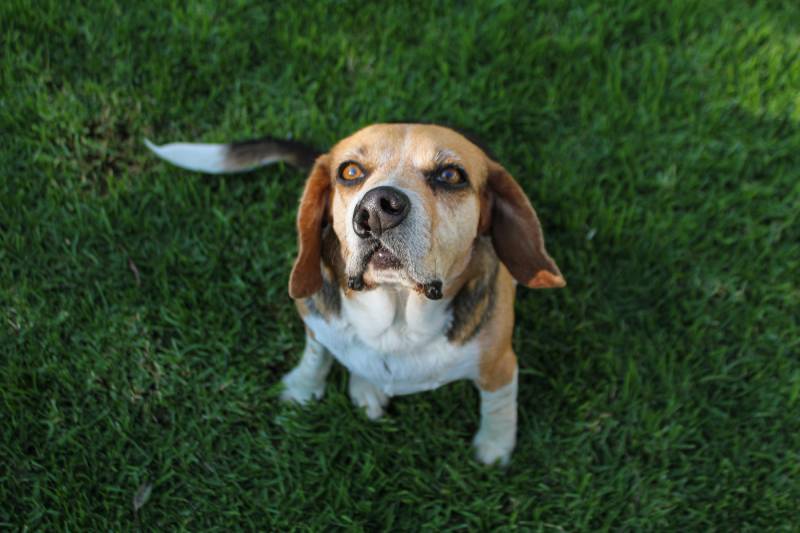Dog Ear Hair Plucking: Our Vet Answers Concerns & Alternatives

Updated on

If you have a dog with hairy ear canals, you are probably aware that they are much more prone to getting wax buildup, ear dreadlocks, and infections. One of the most important parts of preventive health for these dogs is maintaining good ear hygiene, but what exactly does that entail?
You may have heard people talking about having the dog’s ears plucked and would like to know if this is something you should be doing. Ear plucking, when done correctly, can help reduce the buildup of hair and wax in the ear and allow better airflow into the canal, but it can also cause inflammation, bleeding, and, as you can probably imagine, quite a bit of pain!
So, what is the best thing to do? Let’s get into it.
What’s the Problem With Hairy Ears?
Compared to the fine, short hair of many dogs, breeds like Cocker Spaniels, Bichon Frise, Poodles, and various others often have quite dense, curly hair growing in their ear canals. Being in a place that’s not exactly easy to brush, these hairs often become knotted, causing wax to build up in the ear canal, which can lead to inflammation and infection.
One method of combating this has been to pluck the hair in the canal to thin it out, with the aim of reducing the risks of ear infection. The problem with this technique, however, is that pulling the hair, root and all, is painful, which often results in a dog that hates having their ears touched—quite understandably. The other issue is that the act of plucking the hair causes irritation and inflammation to the sensitive skin lining the ear canal, which can actually increase the risk of infection.
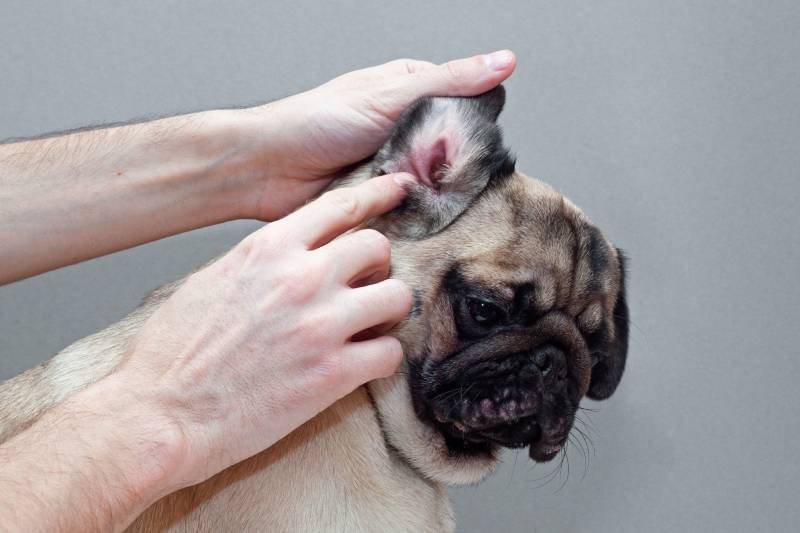
To Pluck or Not to Pluck?
We know that very hairy ears have a higher risk of infection, but we also know that plucking the hair can also increase the risk of infection, which leaves us with a bit of a conundrum. Rather than using plucking as the primary way of managing this hairy little problem, here are some steps you can take to reduce the build-up of wax and dreadlocks in your dog’s ears.
1. Start Young
This is something that applies to all dog breeds. Get them used to having their ears touched, played with, and rubbed. Place a tissue over your finger and give the opening a little bit of a tickle. Reward them every time you do this so that they come to associate good things with having their ears touched.

2. Regular Ear Cleaning
If you have a dog with hairy ear canals, it’s good to establish a regular ear-cleaning routine. Once your dog is happy and comfortable having their ears touched, you can introduce a cleaning solution like Epi-otic, or a product like the Hepper Wash Wipes. Wipes are great for basic maintenance, whereas a cleaning fluid is ideal for dogs with waxy ears or those that spend a lot of time in the water.
If your dog’s ears look inflamed or sore, or there is a lot of wax, do not use any ear cleaner. Instead, contact your vet for an appointment, as your dog may have an infection.
3. Grooming
Whether you do it yourself or leave it to a professional, keeping the hair around the ear short will help reduce the number of knots that can form. If you take your dog to a groomer, speak to them about their approach to ears. Some groomers will use plucking and ear cleaners, so if you are not comfortable with this, make sure they are aware.
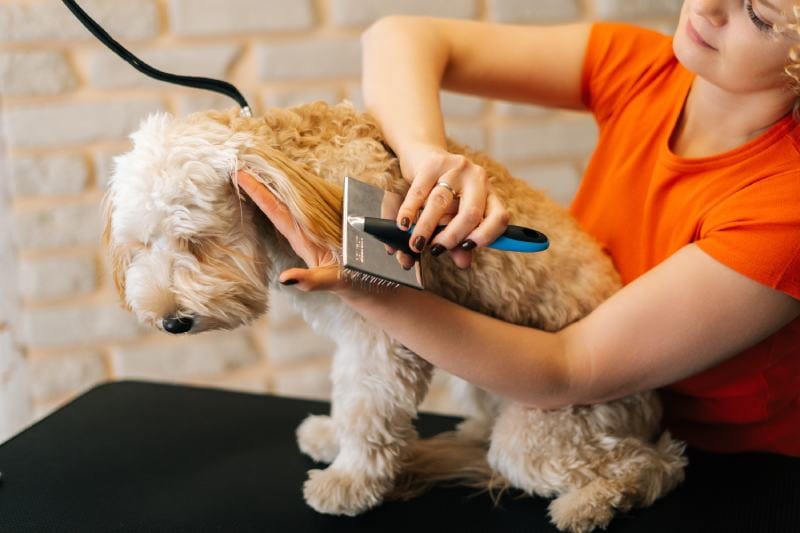
Is It Ever Okay to Pluck Dogs’ Ears?
Sometimes, despite our best efforts, the hair in our dog’s ears can become matted, and no amount of cleaning is going to be enough to clear it away. In these cases, plucking the hair may become necessary, but the aim should be only to remove the hair that is matted. Avoid plucking normal hair from the skin, as this will be painful and may cause inflammation.
The 4 Steps to Pluck Dog Ear Hair
1. Use the Right Equipment
Tweezers are generally too fiddly for this particular job. The most effective tool is a pair of hemostats, which you can pick up easily online. They have a blunt end to minimize the risk of trauma, and they allow you to get a good grip on the hair.
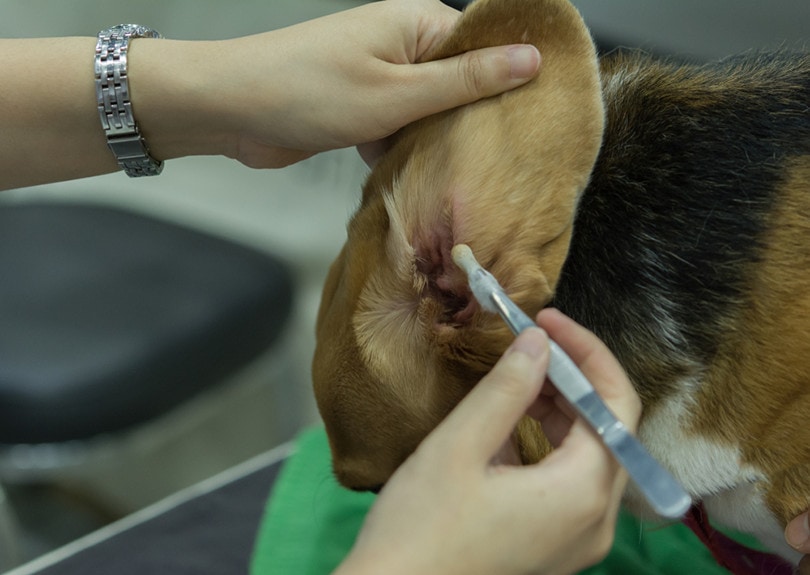
2. Test the Waters
Before going straight in with the hemostats, use a finger to gently have a feel around the ear canal. If your dog is in too much pain for you to do this, it isn’t safe for you to try plucking the hair out, and you should seek veterinary advice.
3. Use the Right Technique
Unlike when we pluck eyebrows or a rogue hair from our chin, the action of plucking hair from a dog’s ear should be slow. Get a good grasp of the knotted hair and slowly twist it, applying very gentle traction. The aim is to free the knotted hair from the ear without causing trauma to the hair still attached to the skin.
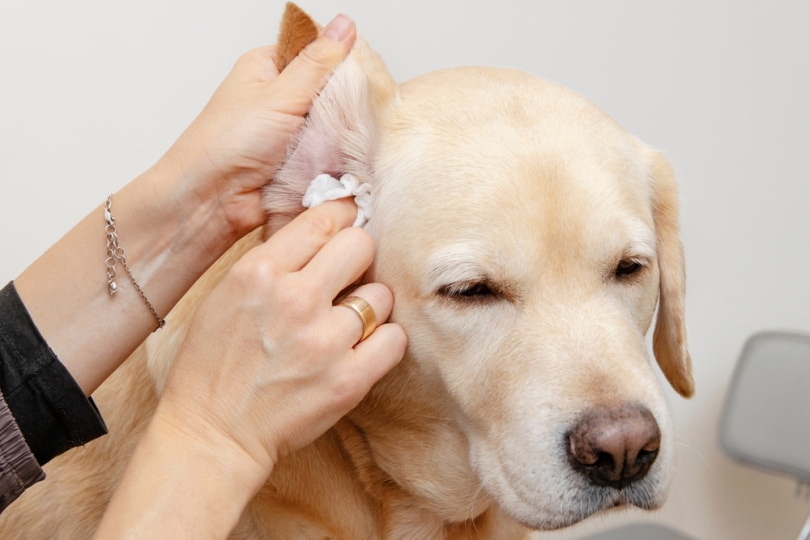
4. Call in the Experts
If your dog is very resistant to this process, do not force it. You will only risk hurting them and possibly yourself. Your vet will likely be able to help you and may recommend sedation to complete the task if that is the safest way to proceed.
You can talk to a grooming specialist about what they recommend, but make sure you are happy with their qualifications and approach. A poorly executed ear plucking can mean you end up at the veterinary clinic anyway.
The Final Verdict
Ensuring our dog’s ears stay clean and healthy is one of our responsibilities as pet owners. When it comes to dogs that are particularly well endowed in the ear hair department, this can become a bit more labor intensive. The best and safest way to maintain good ear hygiene is by keeping your dog’s ears clean and tidy.
Plucking the ear hair isn’t a technique we would recommend for routine maintenance, but it is occasionally needed to clear out irritating ear dreadlocks. If you think your dog might need their ears plucked, be sure to use the right equipment and technique, and when in doubt, reach out to your vet.
Featured Image Credit: Yekatseryna Netuk, Shutterstock






